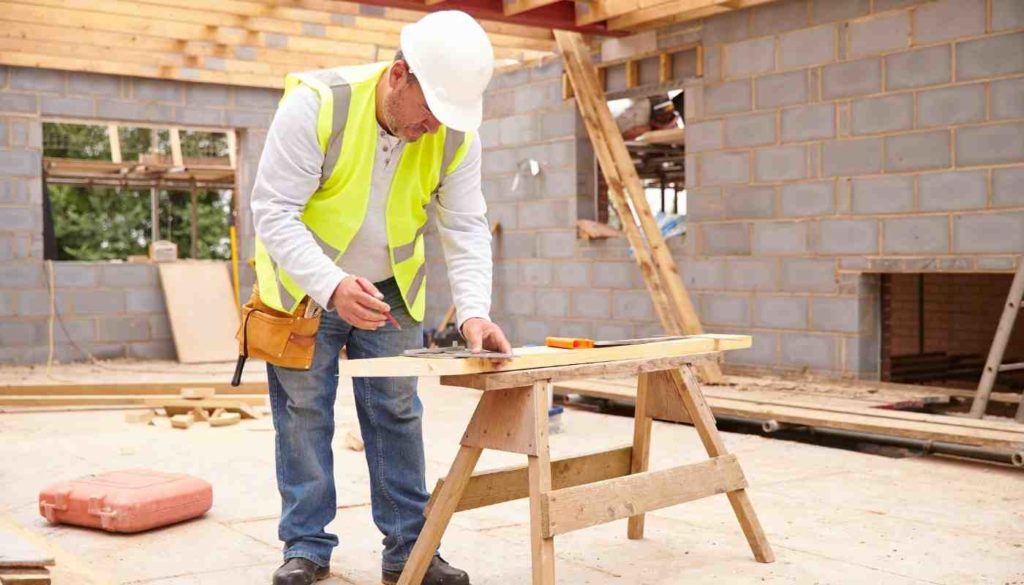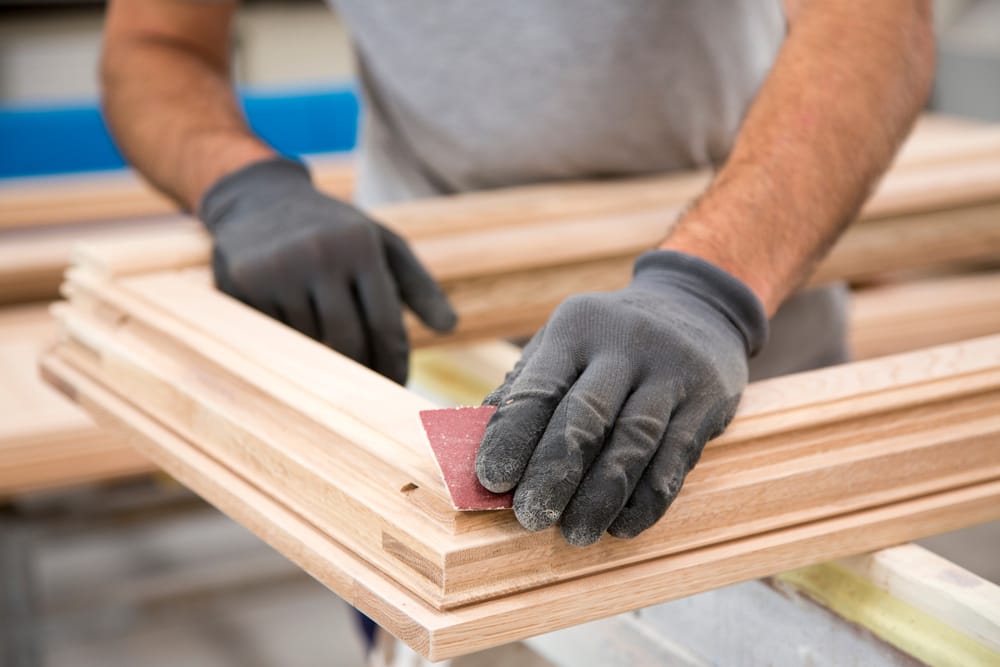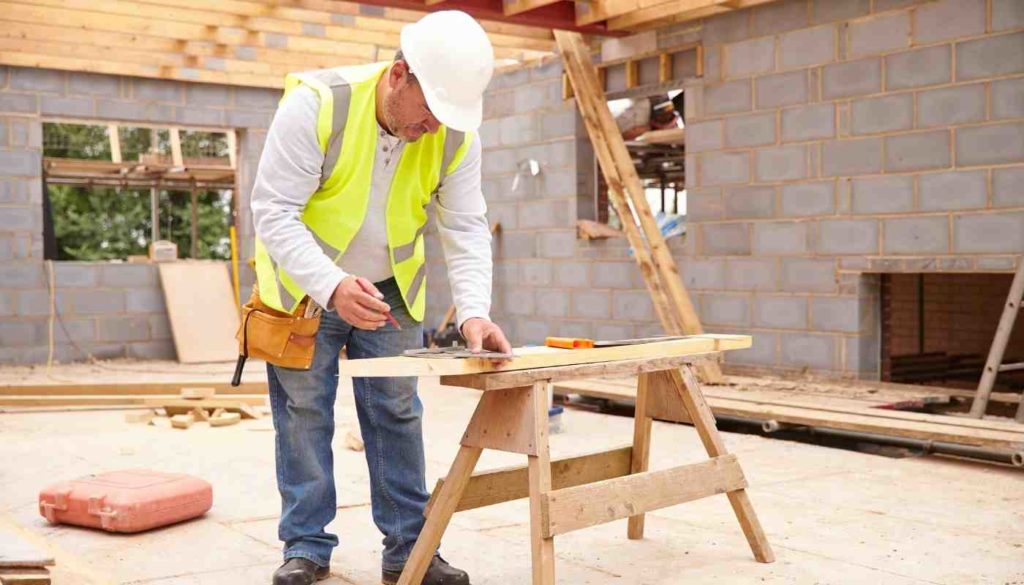Woodworking and carpentry may seem like two sides of the same coin, but are they really the same thing? Let’s delve into the world of craftsmanship and explore the differences and similarities between these two popular disciplines.
When it comes to woodworking, we often conjure up images of sawdust flying, the sweet scent of freshly cut wood, and the creation of beautiful, functional pieces. But is woodworking just another word for carpentry? Well, not quite.
Woodworking focuses more on creating intricate and artistic pieces, such as furniture or sculptures, using various tools and techniques. Carpentry, on the other hand, encompasses a broader range of skills, including building structures like houses, framing, and even installing cabinetry.
While woodworking can be a part of carpentry, it captures the essence of craftsmanship in a more refined and artistic way. So, let’s grab our tools, unleash our imagination, and embark on this journey into the captivating world of woodworking and carpentry.
Woodworking and carpentry are often used interchangeably, but they have slight differences. Woodworking is the general term for creating objects from wood and involves various techniques like carving and joinery. On the other hand, carpentry focuses specifically on building structures and frameworks using wood, such as houses and furniture. While there is overlap between the two, woodworking encompasses a wider range of skills and techniques. So, while related, woodworking and carpentry are not exactly the same.

Is Woodworking the Same as Carpentry?
In the world of craftsmanship and construction, two terms frequently used are “woodworking” and “carpentry.” While they are often used interchangeably, there are some subtle differences between the two. In this article, we will explore the distinctions between woodworking and carpentry, their unique aspects, and how they intersect in certain areas.
Woodworking: A Fine Art of Crafting
Woodworking is an intricate and artistic discipline that involves shaping and creating objects from wood. It focuses on the aesthetic aspect of working with wood and emphasizes precision, detail, and creativity. Woodworkers utilize a range of hand tools and power tools to cut, shape, and join pieces of wood, bringing their designs to life.
Woodworking encompasses a variety of specialties, including cabinetry, furniture making, carving, and woodturning. Each specialization requires a unique set of skills and techniques. Woodworkers often spend hours meticulously refining their projects, paying close attention to the smallest details to achieve the desired result.
Furthermore, woodworking not only requires technical proficiency but also an artistic eye. Woodworkers must have a deep understanding of wood properties, such as grain patterns and textures, to make informed decisions during the crafting process. This combination of skill, craftsmanship, and creativity sets woodworking apart as a fine art within the realm of working with wood.
Carpentry: The Backbone of Construction
Carpentry, on the other hand, focuses on the practical application of working with wood in construction and building. Carpenters are skilled tradespeople who specialize in constructing and repairing structures made from wood, such as houses, buildings, and bridges. They work closely with architects and engineers to bring blueprints to life.
Carpentry involves various tasks, including measuring, cutting, shaping, and installing wooden elements. Carpenters use hand tools and power tools to complete their projects efficiently and precisely. From framing and roofing to flooring and finishing, carpenters play a vital role in the structural integrity and functionality of a building.
Unlike woodworking, which emphasizes artistic expression, carpentry is more focused on functionality and durability. Carpenters need to have a strong understanding of construction techniques, codes, and regulations to ensure that the structures they build are safe and built to last. This practical skill set distinguishes carpentry as a fundamental component of the construction industry.
The Overlapping Areas: Where Woodworking Meets Carpentry
While woodworking and carpentry are distinct disciplines, there are areas where they intersect and complement each other. For instance, when it comes to custom furniture or cabinetry for a house, both woodworking and carpentry skills are necessary.
Woodworkers craft the intricate details and artistic elements of the furniture or cabinetry, while carpenters use their knowledge of construction and installation to ensure these pieces fit seamlessly within the overall structure of the house. This collaboration between the two disciplines highlights the interdependence and synergy between woodworking and carpentry.
Moreover, many individuals choose to pursue both woodworking and carpentry skills simultaneously, becoming hybrid artisans who excel in both areas. This versatility allows them to take on a wider range of projects and offers a broader scope for their creativity and expertise.
The Benefits of Woodworking and Carpentry:
Both woodworking and carpentry offer numerous benefits to those who practice these crafts. Here are some of the advantages:
- Creativity and Self-expression: Woodworking allows individuals to express their creativity and create unique pieces of art.
- Practical Skills: Carpentry equips individuals with practical skills that are in high demand in the construction industry.
- Sense of Accomplishment: Completing a woodworking or carpentry project provides a sense of satisfaction and pride.
- Customization: Woodworking and carpentry enable individuals to create custom pieces that meet their specific needs and preferences.
- Opportunities for Entrepreneurship: Many woodworkers and carpenters start their own businesses and turn their passion into a career.
Woodworking vs. Carpentry: A Comparison
| Woodworking | Carpentry |
|---|---|
| Focuses on artistic expression and aesthetic appeal | Focuses on functional construction and building |
| Involves shaping and crafting wood into intricate designs | Involves constructing and repairing structures made from wood |
| Utilizes various hand tools and power tools | Utilizes hand tools and power tools for construction tasks |
| Emphasizes attention to detail and precision | Emphasizes structural integrity and adherence to building codes |
| Requires artistic creativity and an eye for design | Requires practical skills and knowledge of construction techniques |
Tips for Aspiring Woodworkers and Carpenters:
If you are interested in pursuing woodworking or carpentry as a hobby or profession, here are a few tips to guide you on your journey:
- Invest in quality tools: Good tools are essential for achieving accurate and satisfying results.
- Take classes or apprenticeships: Learning from experienced professionals will accelerate your growth and skill development.
- Practice patience and perseverance: Woodworking and carpentry require patience and the willingness to learn from mistakes.
- Start with small projects: Building your skills gradually with smaller projects will build confidence and expertise.
- Seek inspiration: Explore design magazines, visit woodworking exhibitions, and connect with other craftsmen to gather inspiration and ideas.
Woodworking and Carpentry: Separate Paths, Shared Love for Wood
While woodworking and carpentry have distinctions that set them apart, both are rooted in a shared love and passion for working with wood. Whether you are drawn to the artistic expression of woodworking or the practical application of carpentry, both crafts offer endless opportunities for creativity and creating something tangible.
Key Takeaways: Is Woodworking the Same as Carpentry?
- Woodworking and carpentry are related but not the same.
- Woodworking involves creating objects from wood, while carpentry focuses on building structures.
- Woodworking often involves artistic and decorative elements.
- Carpentry requires knowledge of construction techniques and building codes.
- Both woodworking and carpentry require skills and expertise to work with wood.
Frequently Asked Questions
In this section, we will address some common questions about woodworking and carpentry to help you understand if they are the same or different.
1. What is woodworking?
Woodworking is the craft of creating objects out of wood. It involves various techniques such as cutting, shaping, and joining wood to build furniture, cabinets, sculptures, and more. Woodworking can range from simple DIY projects to intricate, fine woodworking.
Woodworking encompasses a wide range of skills, including measuring, sawing, sanding, and finishing. It requires knowledge of different types of wood, tools, and techniques to bring a design to life.
2. What is carpentry?
Carpentry is a branch of woodworking that specifically focuses on the construction of structures made of wood. Carpenters work on building projects such as houses, buildings, decks, and frameworks. They use woodworking skills to construct and install wooden elements like doors, windows, and staircases.
Carpentry involves working with precise measurements and calculations to ensure structural integrity. Carpenters use a variety of tools, including saws, drills, and hammers, to cut, shape, and assemble wooden components for construction projects.
3. Are woodworking and carpentry the same?
While both woodworking and carpentry involve working with wood, they have different focuses. Woodworking refers to the general craft of creating objects out of wood, while carpentry specifically involves the construction of wooden structures.
Carpenters often use woodworking techniques, but their primary role is to work on larger construction projects. Woodworking encompasses a broader range of woodworking projects, including furniture making, cabinetry, and artistic woodworking.
4. Can a carpenter be a woodworker?
Yes, a carpenter can also be a woodworker. Many carpenters have expertise in various woodworking techniques because they are essential for their craft. Carpenters often have a solid foundation in woodworking skills, including cutting, shaping, and joining wood.
However, it’s important to note that not all woodworkers are carpenters. Woodworkers can focus on creating smaller wooden objects or specialize in artistic woodworking, while carpenters primarily work on construction projects.
5. Can woodworking skills be helpful in carpentry?
Absolutely! Woodworking skills are incredibly valuable in carpentry. Many of the techniques and principles used in woodworking are applicable to carpentry projects. Knowledge of woodworking joints, measuring, and shaping wood can enhance a carpenter’s ability to build and install wooden structures.
Moreover, having woodworking skills allows carpenters to create custom elements or perform repairs when needed. Woodworking skills provide a strong foundation for a carpenter, enabling them to bring creativity and precision to their construction work.

Woodworker Vs. Carpenter Vs. Contractor (WHAT’S THE DIFFERENCE?!)
Summary
Woodworking and carpentry have similarities, but they are not exactly the same thing. Woodworking focuses more on creating intricate and detailed projects using various tools and techniques. Carpentry, on the other hand, is about constructing and repairing structures and involves working with wood but also other materials such as metal and concrete. Both woodworking and carpentry require skill and practice, but they have different areas of expertise. So if you want to build furniture or carve beautiful designs, woodworking might be for you. If you enjoy building houses or fixing things, carpentry could be your calling.
Overall, while woodworking and carpentry share common elements, they each have their distinct focuses and applications. But regardless of which path you choose, both offer rewarding opportunities to work with wood and unleash your creativity. So whether you decide to become a woodworker or a carpenter, what matters most is pursuing your passion and enjoying the journey of working with wood.
